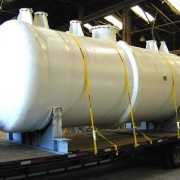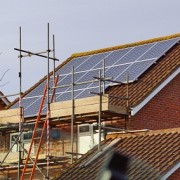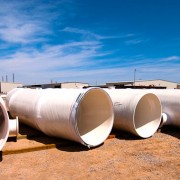5 Things You Should Know About Corrosives and FRP
 In our last post we talked about the need for education about FRP, and now we’re putting our money where our mouth is. Here are the 5 things you need to know about FRP and corrosives.
In our last post we talked about the need for education about FRP, and now we’re putting our money where our mouth is. Here are the 5 things you need to know about FRP and corrosives.
-
When acids and bases attack and corrode metals; dangerous gases can often be given off. For example, common bases such as sodium hydroxide and potassium hydroxide in concentration have been known to attack aluminum, zinc, galvanized metal and tin and give of hydrogen gas.
FRP can be formulated to be corrosion resistant and have demonstrated long life cycles in extreme industrial environments. For example, FRP gas scrubbing systems, at a phosphate fertilizer plant, exposed to aggressive flu gases consisting of hydrochloric acid, hydrofluoric acid, and phosphate dust at 60˚ C had a service life of 50 years—stainless steel could not withstand the highly corrosive mixture. There are many more examples.
- Hydrogen gas is flammable and will burn or explode if an ignition source is present.
Because FRP will not corrode there is no risk of releasing flammable gases such as hydrogen. Hydrogen gas forms explosive mixtures with air if it is 4–74% concentrated and with chlorine if it is 5–95% concentrated. H2 mixtures can spontaneously explode by spark, heat or sunlight if proper conditions are present. H2 reacts with every oxidizing element. Hydrogen can react spontaneously and violently at room temperature with chlorine and fluorine. Why take a chance?
- Contact with corrosives can damage containers, equipment, installations, and building components made from unsuitable materials.
FRP will not corrode; it will thrive and endure in stringent conditions where other materials fall short or fail. FRP has been used successfully in a wide variety of applications in chemical processing, mining and minerals, nuclear, desalination, waste water treatment, nuclear, pulp and paper, and petrochemical.
- Some corrosives are flammable, combustible, and can easily catch fire, burn, or explode.
FRP offer versatility, durability, design flexibility and superior containment. FRP can be formulated to be corrosion and abrasion resistant, as well as, smoke and fire retardant. FRP are not combustible. FRP will not spark and will enhance the safety of your project.
- Corrosives can be incompatible with other chemicals. They may undergo dangerous chemical reactions that yield or give off toxic fumes.
Why take a chance with toxic fumes, dangerous chemical reactions, and explosions? Use the proper material to protect your equipment, installations…and your future. Protect your investments, enhance safety and employ FRP—the cost-effective choice that will solve many of your corrosion problems.













